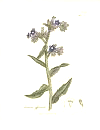Taste is a matter of blend: Cocoa butter, the secret behind tasty chocolates
The world’s best chocolates are produced with cocoa butter. Right from the ancient times, cocoa bean has been the major ingredient in chocolates. It is the skill of the chocolatier to unveil the treasures behind the cacao shell and create fine chocolate.

Origin of chocolate: In 1615, after the marriage of the French Emperor Louis XIII to Anne of Austria, the French court discovered the strange brew famous for its replenishing properties. Later, Louis XIV took the special privilege of making and selling the extraordinary confection known as “chocolat” on David Chaillou, the boutique owner on the rue de L’Abre-sec in Paris. In 1778, a Parisian invented the first machine to grind, mix and compress chocolate.
After several years in 1825, Antoine Brutus Menier built the first mechanized chocolate factory in Noisel-sur-Marne, labeling the debut of the modern chocolate works and the sweet entry of chocolate into the lives of every human being in this world.
Process in making chocolates: There are various processes involved in chocolate making. They are:
1. Roasting: Roasting is an important stage which decides the final flavor of a chocolate. The supreme quality of a chocolate relies on the systematic process followed at the time of roasting the cocoa beans. Roasting is the first stage in a product’s customization and it develops the flavor of beans resulting in the rich flavor of the chocolate.
Types of roasting:
Pre-roasting: Cocoa beans are treated with hot air or infra-red radiant heaters to separate the shells from the bean content. The beans are roasted at 100°C (212°F) to 150°C (300°F) for about twenty to forty minutes.
Direct roasting: The shelly beans are roasted and then shelled together. This is the traditional method that permits the flavor to develop perfectly. This direct roasting is done between 150°C and 160°C (300°F-320°F) for forty to fifty minutes.
2. Shelling: Roasting is followed by shelling where the beans are shelled. Shelling stage is complete when there are very few residual shells and grains of regular size are left. These beans can be made into fine, smooth chocolate.
3. Milling: Milling is done to depreciate the beans to even finer particles. Care should be taken as the friction generated heat can cause smoky or burnt off-flavors and may spoil the flavor of chocolate.
4. Refining: In the refining process, the milled particles are converted into liquid cocoa mass.
5. Conching: A conche is a container filled with metal beads that act as grinders. Conching involves powerful machines that stir the chocolate in a controlled way. The more the conching period, the better the quality and smoothness of the chocolate.
6. Tempering: Tempering is the art of converting liquid, or semi-liquid chocolate into a solid one. Chocolate is heated up to a certain temperature till the cocoa butter crystals melt perfectly. After which the heated chocolate is cooled at a specific temperature.
The secret behind tastier chocolates is nothing but the careful processing of cocoa butter. When processed in the right way, with proper ingredients and flair, one can make world-favorite chocolates.
Comments Off on Taste is a matter of blend: Cocoa butter, the secret behind tasty chocolates







